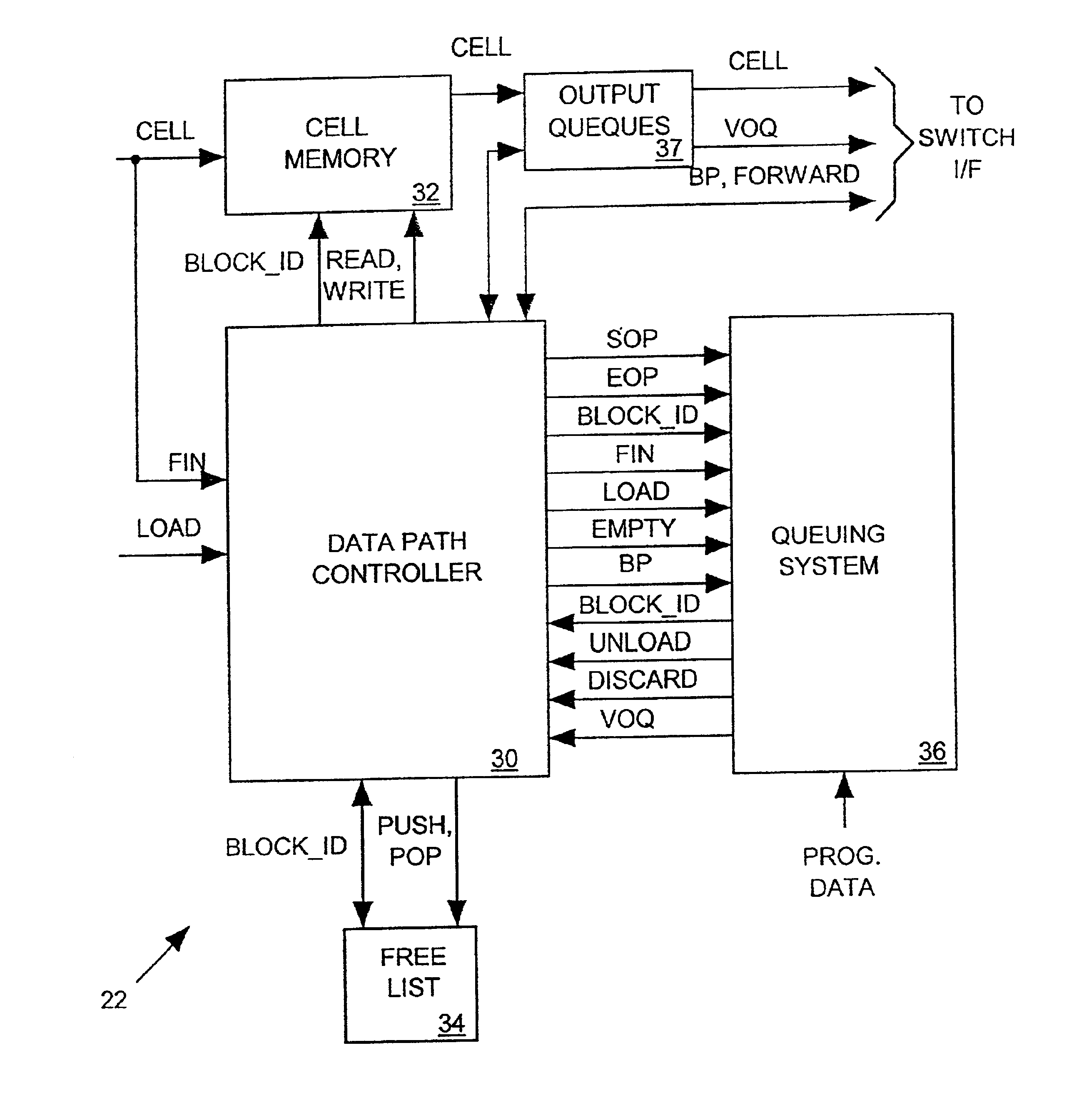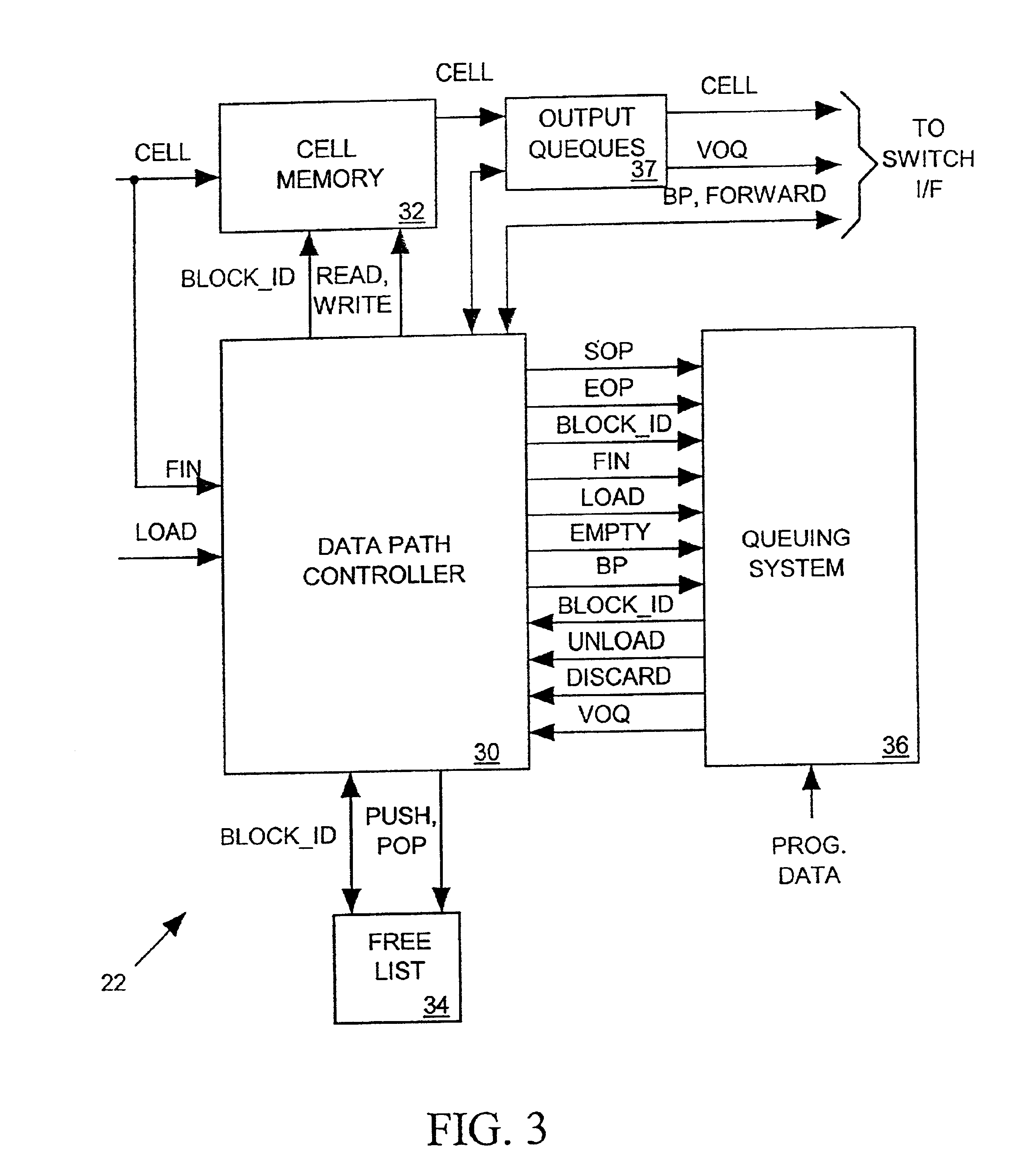Traffic manager for network switch port
a traffic manager and network switch technology, applied in data switching networks, store-and-forward switching systems, time-division multiplexing selection, etc., can solve the problem of reducing the throughput rate of the output port forwarding packets over a given bus or bus channel, the rate of the flow queue and output resource is not independently adjustable, and the rate of the output port forwarding packets is often subject to contractual limits
- Summary
- Abstract
- Description
- Claims
- Application Information
AI Technical Summary
Benefits of technology
Problems solved by technology
Method used
Image
Examples
Embodiment Construction
[0034]FIG. 1 illustrates a network switch 10 in accordance with the invention for routing network transmissions (packets) between a set of network buses 12. Network switch 10 includes input switch ports 14, output switch ports 15, a crosspoint switch 16, and a routing control circuit 18. Each input switch port 14 receives incoming packets arriving on a separate input bus 12A and each output port 15 forwards outgoing packets on a separate output bus 12B. Although not shown in FIG. 1, each input switch port 14 may receive packets on more than one incoming bus 12A and each output port may selectively forward outgoing packets on more than one outgoing bus 12B or output bus channel. Crosspoint switch 16 selectively provides signal paths between input switch ports 14 and output ports 15 in response to control data from routing control circuit 18 based on routing requests from input switch ports 14.
[0035]Incoming packets arriving on buses 12A are network data transmissions th...
PUM
 Login to View More
Login to View More Abstract
Description
Claims
Application Information
 Login to View More
Login to View More - R&D
- Intellectual Property
- Life Sciences
- Materials
- Tech Scout
- Unparalleled Data Quality
- Higher Quality Content
- 60% Fewer Hallucinations
Browse by: Latest US Patents, China's latest patents, Technical Efficacy Thesaurus, Application Domain, Technology Topic, Popular Technical Reports.
© 2025 PatSnap. All rights reserved.Legal|Privacy policy|Modern Slavery Act Transparency Statement|Sitemap|About US| Contact US: help@patsnap.com



